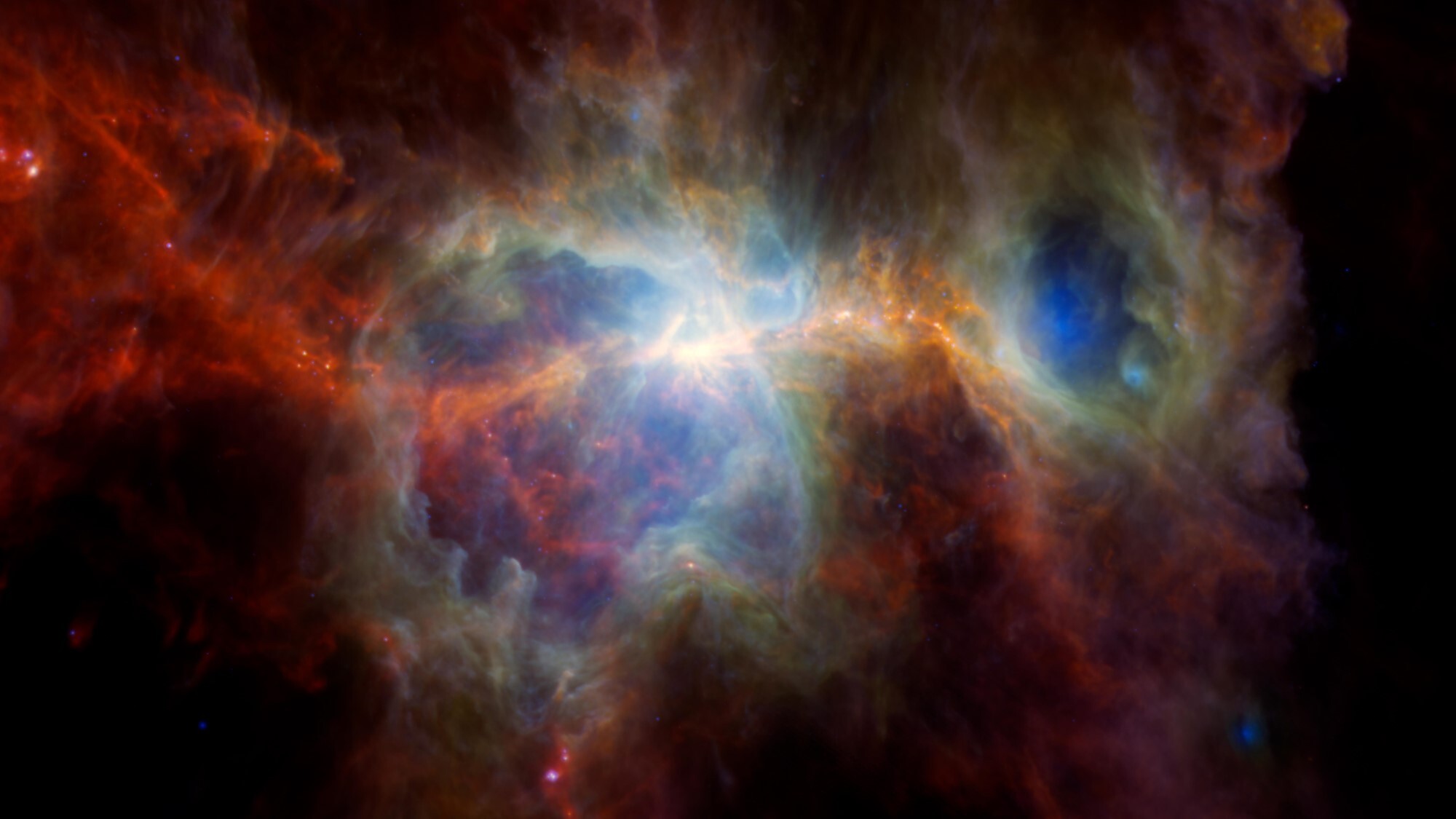5.12.2022
A new image of the closest star-forming nebula to Earth shows the effect massive stars have in transforming the region.

An infrared image of the Orion Nebula showing hotspots that mark the birth of new stars. (Image credit: ESA/NASA/JPL-Caltech)
A stunning new image of a stellar nursery tells a cosmic tale of death and rebirth.
The photo of the Orion Nebula, the closest star-forming region to Earth, captures the transformation that occurs as massive stars die within the region, leaving the building blocks of the next generation of stellar objects.
The image was created using data from NASA's now-retired Spitzer Space Telescope; the Wide-Field Infrared Survey Explorer, now known as NEOWISE; and the European Space Agency's now-retired Herschel Space Observatory.
Located in the constellation Orion and named after the Greek mythological hunter who was killed by the sting of a scorpion, the dust cloud has a creation story that's perhaps equally worthy of a place in mythology.
Within the star-forming region, which is about 30 to 40 light-years wide and located around 1,300 light-years away, are two gigantic caverns carved out by giant stars, which themselves are obscured by thick dust in the image. As these massive stars blast out millions of times more radiation than the sun, this radiation breaks apart dust grains, creating the giant voids that dominate the nebula.
The remaining dust is whittled away by winds from the nebula's stars and by supernovas, tremendous cosmic explosions that occur when the massive stars die.
In the image, patches of warm dust are marked by blue light, while slightly cooler dust around the edges of the caverns is colored green. The red in the image comes from cold dust that reaches temperatures as low as minus 440 degrees Fahrenheit (minus 260 degrees Celsius); these regions are located mostly on the outer edges of the dust cloud, away from the areas where young and hot stars are forming.
Threaded between the two gigantic hollows of the Orion Nebula are orange filaments that exemplify the tale of death and rebirth told by the image. Within these filaments is material from supernova blasts that could coalesce into the next generation of massive stars, NASA officials wrote in a statement.
Eventually, these newborn stars will begin ejecting tremendous amounts of radiation, blasting away the dust clouds that birthed them and reshaping the region again before they die in supernovas and once again enrich the region with heavy elements for the next generation of stars.
The transformation story told by the image also extends to the telescopes behind its creation. In 2020, the Spitzer Space Telescope was retired after 17 years of observing the universe in infrared. During its operational lifetime, Spitzer examined extrasolar planet temperatures, discovered a giant ring around Saturn and assisted in spotting some of the most distant galaxies in the universe.
Launched in 2009, the WISE spacecraft was placed in hibernation after just two years. However, in 2013, NASA granted the telescope a second mission to search for near-Earth asteroids. Renamed NEOWISE, the mission is still operational today and has been used to set limits on the numbers, orbits, sizes and compositions of asteroids scattered throughout the solar system.
Quelle: SC
